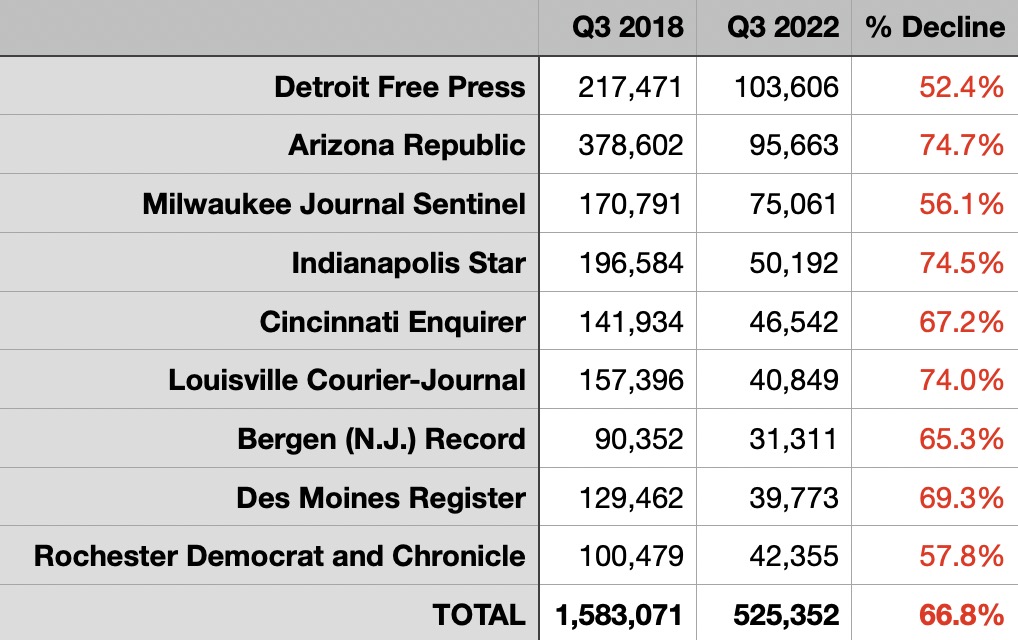- Sep 13, 2002
- 100,536
- 213,122
- 113
Eye-opening, sad and bad for democracy:
At the end of 2018 — the last full pre-merger year — the two companies had a total of 27,600 employees, according to a Gannett spokesperson. The merger closed in mid-November 2019, by which time it had about 25,000 and was diving headlong into a hunt for “inefficiencies.”
By December 31, 2019, the combined company was down to 21,255. By the end of 2020, that had dropped to 18,141. A year later: 13,800. And its most recent SEC filing reports that, as of the end of 2022, Gannett had just 11,200 employees remaining.
In other words, Gannett has eliminated 59% of its jobs in four years. It’s as if, instead of merging America’s two largest newspaper chains, one of them was simply wiped off the face of the earth.

At the end of 2018 — the last full pre-merger year — the two companies had a total of 27,600 employees, according to a Gannett spokesperson. The merger closed in mid-November 2019, by which time it had about 25,000 and was diving headlong into a hunt for “inefficiencies.”
By December 31, 2019, the combined company was down to 21,255. By the end of 2020, that had dropped to 18,141. A year later: 13,800. And its most recent SEC filing reports that, as of the end of 2022, Gannett had just 11,200 employees remaining.
In other words, Gannett has eliminated 59% of its jobs in four years. It’s as if, instead of merging America’s two largest newspaper chains, one of them was simply wiped off the face of the earth.

The scale of local news destruction in Gannett’s markets is astonishing
It might not be as mustache-twirling a villain as Alden Global Capital, but its enormous scale has meant enormous losses for local journalism.
www.niemanlab.org
